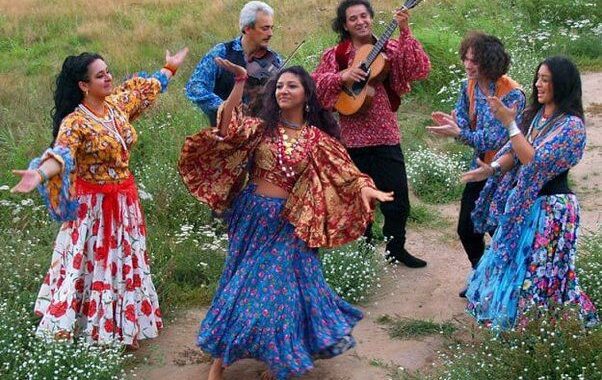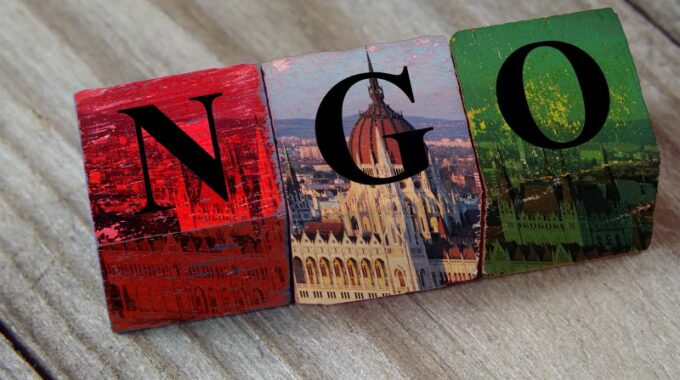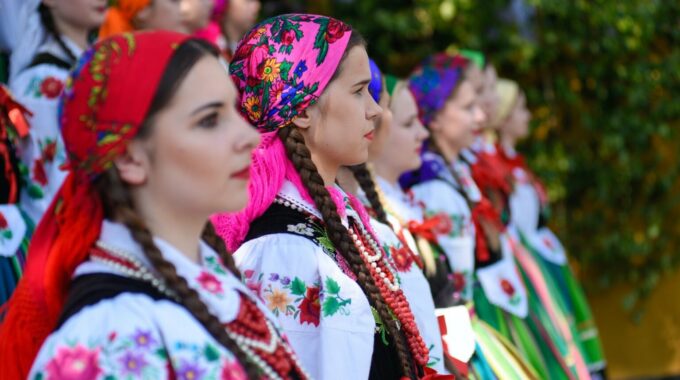
“Identity of the Roma minority living in Slovakia
“Identity of the Roma minority living in Slovakia” is the first contribution in a new series of articles in cooperation between Futureg and PDCS within the project “Digital Activism”. The aim of this project is to bring valuable knowledge and promote greater tolerance and understanding towards the Roma and Hungarian minorities in Slovakia.
The first article of this series is the work of Viktória Valachová, a graduate of the Faculty of International Relations, and Katarína Csikosová, a doctoral student at the Philosophy Faculty, Department of Religious Studies. Their work is the first step in our effort to deepen and illuminate various aspects of the life of the Roma and Hungarian minorities in Slovakia.
The Roma have a rich and fascinating history that goes back to distant times. Their story is full of adventures, challenges, and persistence. From millennium to millennium, they travel all over Europe, bringing with them their culture, language, and traditions. The Roma are one of the oldest and largest minorities in Europe and their presence is an important part of Europe’s cultural and historical heritage.
Many of them hide their unique cultural heritage and origins to avoid prejudice and discrimination. This caused many years of oppression and especially the 20th century when the Roma became victims of persecution by Nazi and Communist regimes. In this article, we will try to present a brief Roma history and cultural identity.
According to historians, a group of people who today call themselves Roma began to move to Europe around the year 1000. They originally came from areas where the Sanskrit language was spoken. The Roma had a long journey that took them through the Persian Empire and the Byzantine Empire, to the European continent. It is believed that they arrived in Europe sometime between the 13th and 14th centuries. Since then, the Roma have expanded their presence around the world. Today, Roma can be found in several countries, with the largest communities living in countries such as Bulgaria, Hungary, Romania, Spain, and Turkey.
The Roma, although they are one of the oldest and largest minorities in Europe, their story is often shrouded in the darkness of prejudice and stereotypes. They have their own language, traditions, music, and customs that differ from the majority culture. Roma culture is very varied, yet many Roma feel oppressed and therefore choose to hide their origin. This can have multiple generational negative consequences. One of them is the loss of identity, the feeling that they do not belong anywhere, and the loss of community. When Roma people try to fit into mainstream society by suppressing or denying their culture, it can lead to exclusion in their community and detachment from their roots.
Roma have migrated across Europe for thousands of years, with significant numbers still occurring today in Eastern Europe. This long-term migration and nomadic way of life has contributed to the fact that Roma culture has a rich heritage, especially in the field of oral tradition. This dispersion has also contributed to a rich cultural diversity between different ethnicities within Roma communities. Therefore, the Roma population in Europe is very diverse. Roma people are divided into many ethnicities according to where they live, what culture they have, what language they speak and their way of life.
What we know about their culture comes from oral histories and stories told by singers and older members of the community. It is thanks to this diversity of oral tradition and stories that Roma culture has become extremely rich and interesting. The diverse stories, songs, magical practices, and customs reflect not only the history of the Roma, but also their values, visions and way of life. This aspect of Roma culture is an important pillar of identity for many Roma and plays a key role in preserving their unique culture and heritage.
Although all Roma have a common origin, they speak different dialects that have developed over centuries and are still developing from their original language, rromanës, and from the language of the majority society where they live. “Rromanës has its roots in Sanskrit languages and is related to Hindi, Punjabi, Urdu and Bengali and others,” according to the Roma News Agency.
The Roma people are known primarily for their amazing music and have become great musicians in Europe. In each country, they created their own musical style. For example, in Central Europe they played dulcimer, in Southeast Europe on sheet metal wind instruments and in Spain on guitars. In 2010, UNESCO included the Roma-Spanish music-dance style “Flamengo” in the worldwide intangible heritage. Even in Slovakia, they had their own way of playing music. In some parts of Slovakia, Roma music bands have become more popular than regular folk bands. Over time, as they lived here, they even learned to play ordinary Slovak folk songs, but with their own style. Their music had a great influence on the Slovak folk music style. Roma people have contributed and continue to contribute to Slovak culture through their rich cultural heritage, which is an inseparable part of Slovak cultural identity. Thus, there is a mutual influence and enrichment of Slovakia.
But the Roma are not only known for their music. For example, the world-famous Charlie Chaplin with Roma roots was a British actor, comedian, director, and producer who became an icon of world cinema. Charlie Chaplin was very famous for his funny films, but also for speaking out about politics, which worried some people, especially during World War 2, which was a particularly difficult time for the Roma. Charlie had a big heart and felt disgusted by the militant nationalism that spread around the world in the 20th century. He thought nationalism was dangerous because it incited people to aggression and conflict. Charlie was afraid that such things could cause a lot of misfortune and torment for people. In the end, he was right.
But even in Slovakia we have many personalities of Roma origin. For example, the hero Anton Facuna, an amazing person born in a picturesque village named Horné Jaseno. Born 1. February 1920 and was a proud Slovak and Roma. Even though he became a member of the Slovak Army, his story was not only about his military experience, but also about his amazing contribution to the Slovak National Uprising and his valiant fight for the freedom of our nation. During the Slovak National Uprising, when Slovakia was trying to regain its freedom, Anton belonged to the partisan resistance, where he fought for the rights and freedom of the entire Slovak people, regardless of origin.
Another influential person is Ľudovít Didi, an amazing person who was born in the picturesque town of Púchov on January 16, 1931. He was a teacher, which meant he cared about education. But his story wasn’t just about teaching, it was about his courage and determination to fight for justice and freedom. When Louis witnessed how the communist regime oppressed people and restricted their freedom, he decided to do something about it. He became a participant in the anti-communist resistance, which meant that he opposed injustice and oppression. But that wasn’t the only thing Louis stood up for. He was also the first Roma writer of novels in Slovak literature. This meant that he wrote books that told stories about the life and experiences of Roma in Slovakia. His stories are still very important today because they help people better understand Roma culture and life. His works include: Tales Holy by the Wind, The Gypsy Oracle or The Black Roma and White Love.
Our well-known writer Elena Lacková, who was born on March 22, 1921, in Veľký Šariš, was an exceptional woman and the first female Roma writer who wrote in the Romani language. Elena had a big heart and passion for writing. In her most famous works we can find a play called The Burning Gypsy Camp or a story called I was born under a lucky star. These stories told about the Roma people and their experiences. But Elena was not only a writer. In 1968, she co-founded the Union of Gypsies-Roma, which was an important step towards making the voice of the Roma people valid and their rights better respected. She was also a member of the Association of Slovak Writers and chairwoman of the Cultural Association of Roma Citizens in Slovakia. In 2001, she became a great role model because she was awarded the state decoration Order of Ľudovít Štúr III. class. She was awarded this prize for her many years of efforts to bring the values of the Roma nation closer to society and for understanding the suffering during the Roma Holocaust.
It is very important that, as a society, we create an environment where everyone, including the Roma, are proud of Roma culture and identity, and where they do not have to hide their roots for fear of discrimination. Integration should not mean a loss of identity but, on the contrary, should enable the Roma to live in a society where their culture and contribution are valued and respected. It is therefore important to ensure an inclusive environment where all people can feel accepted and recognized, regardless of their ethnic origin.


Sources:
https://www.litcentrum.sk/autor/elena-lackova
https://www.teraz.sk/slovensko/vyznamna-romska-spisovatelka-elena-l/536408-clanok.html
https://eriac.org/wp-content/uploads/2021/01/ANTON-FACUNA.pdf
http://amariluma.romanokher.sk/encyclopedia/facuna-anton/
https://www.litcentrum.sk/autor/ludovit-didi
https://www.teraz.sk/magazin/pred-90-rokmi-sa-narodil-ludovit-didi/520600-clanok.html
David Robinson, Chaplin His Life and Art. 2013
Ian F. Hancock. We are the Romani people. 2002
https://www.wilsoncenter.org/publication/226-the-plight-the-roma-eastern-europe-free-last
https://encyclopedia.ushmm.org/content/en/article/genocide-of-european-roma-gypsies-1939-1945
Embracing the Roma Identity: The Importance of Acknowledging and Celebrating Our Roots (wrf-gov.org)
Roma Culture: Customs, Traditions & Beliefs | Live Science
Rusnakova-Pollak_-Sociálna-práca-v-marginalizovaných-rómskych-komunitách.pdf (ukf.sk)



